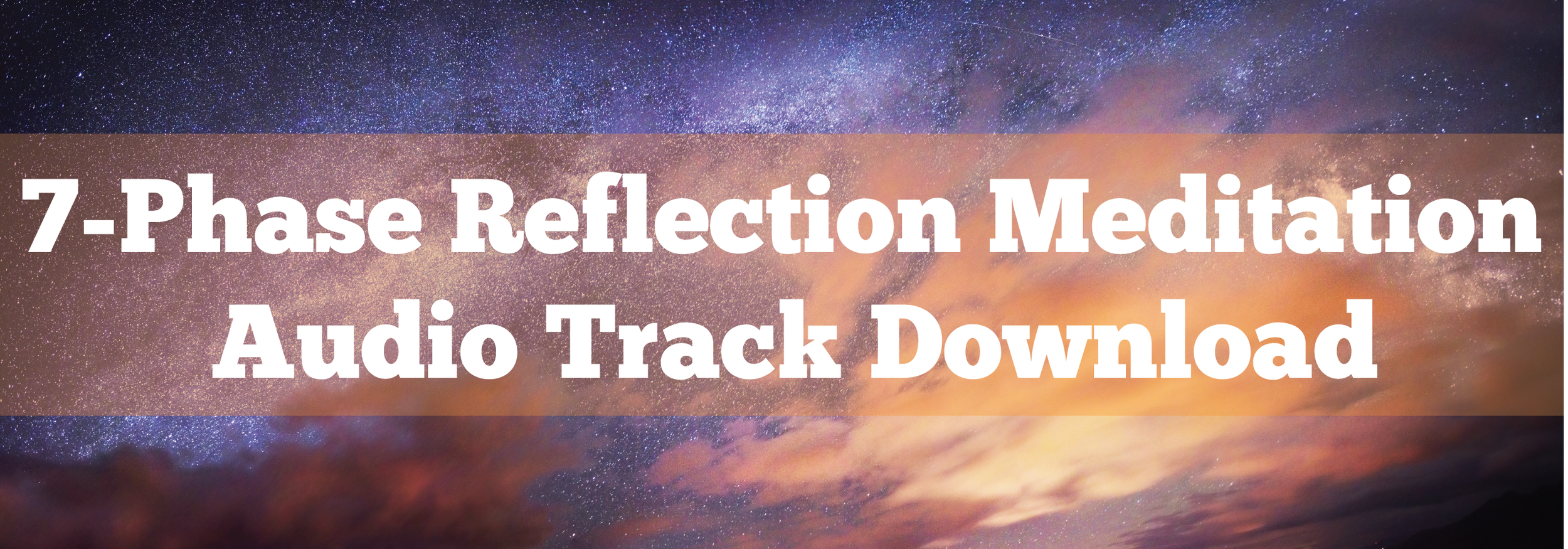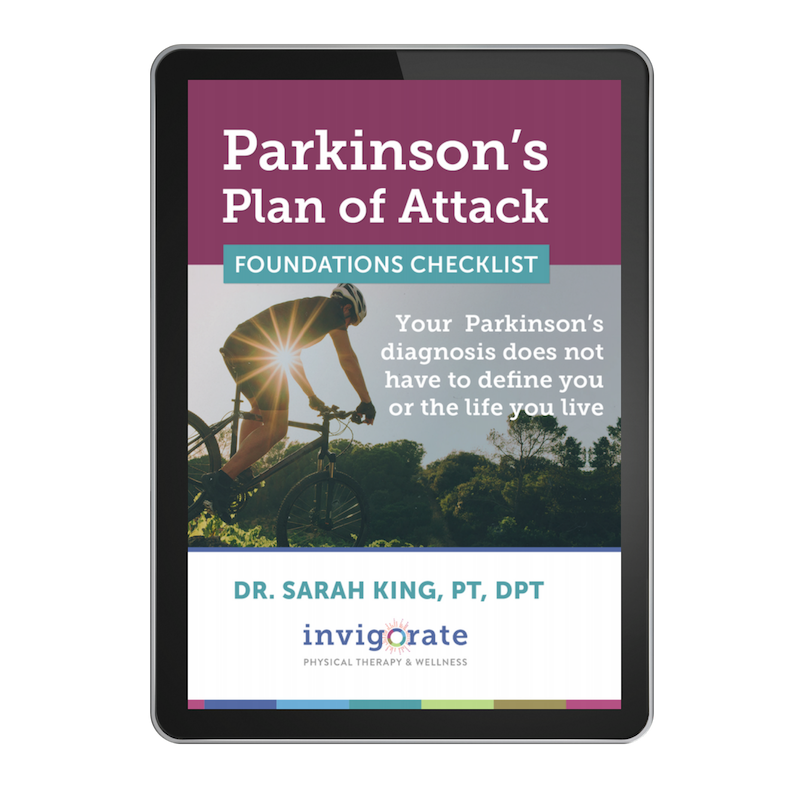“Mindset is everything.”
You probably hear this phrase a lot, and understand it’s truth.
However, sometimes finding the “right” mindset can be an incredible challenge.
Can you relate?
After running a Parkinson’s-specialized physical therapy practice for 3+ years, seeing and talking to thousands of people diagnosed with PD, I can tell you I recognize a significant pattern:
People who are shrouded in anxiety, fear, worry, and stress have the hardest time.
The challenge is that knowing stress is bad for your prognosis only exacerbates the problem. You can’t just “get over it”.
So, what can you do when you’re absolutely overwhelmed by stress, anxiety, and fear?
The research suggests a powerful, Dynamic Duo:
Exercise and Meditation.
According to one study, when you combine the two, people have a significant reduction (up to 40%) of their depressive symptoms, less rumination over bad thoughts, increased attention and concentration.
Today we’ll talk about why each of these are so powerful, as well as hand over some practical tools you can use to get start loosening the grip anxiety may be holding on your life.
Would You Rather Watch than Read?
Anxiety Fighter #1: Exercise
It’s no secret these days that vigorous exercise helps improve your physical and cognitive functioning.
Unlike medication, exercise is the only intervention that’s also been shown to slow the progression of the disease in the long-run.
It can also be one of the most powerful ways to immediately decrease your anxiety and stress levels.
When your body is stressed, it’s “fight or flight” mechanism is activated. Your body is loaded with energy, ready to use it to save you from that situation.
Next time you’re stressed, try using some of that pent-up energy on a vigorous bike ride, walk around the block, or a 15-minute Parkinson’s exercise circuit in your living room.
When your body has a place to put that energy, you’ll notice it’s easier to calm down.
The best way to keep your anxiety levels down is to exercise regularly - at the very minimum 20 minutes per day, or 2.5 hours per week - instead of just when you’re feeling overwhelmed.
Need help getting moving?
If you’re looking for accountability and in-person support, I'd love to invite you to learn more about my 5-Week Online Parkinson’s Booster Program here.
Anxiety Fighter #2: Meditation
Don’t run away - meditation may not be what you think it is.
This type of activity is not associated with any specific religion, and doesn’t necessarily have to be done sitting cross-legged on the floor.
Meditation is simply “time spent in increased awareness of your thoughts in the present moment”.
Why is it so important to be aware of your thoughts?
Thoughts draw up Emotions.
Emotions create a Physiological Response.
Let me illustrate this for you with a quick activity:
What’s something that happened in the last week or so that really stressed you out?
Put yourself back into that place and feel what happens to your body.
Your heart rate elevates…
you feel heavy, drained of energy…
you start to curl up..
your breathing gets more shallow.
Now, think of something that makes you really happy. (Grandkids? Sunshine? Traveling?)
Your body starts to relax..
you’re breathing deeper…
you're feeling lighter, warmer...
This example should illustrate to you how your thoughts trigger your emotions and your emotions trigger your body’s stress response.
You’ve all experienced the impact of a stressful situation (whether temporary or stretched out over time) on your symptoms.
When you’re stressed, your symptoms get worse.
It’s time to dive deeper and investigate the core of your stress and anxiety: your thoughts.
Fear is Anxiety’s Birthplace
Even if you’re not a Jedi, Yoda’s words ring true.
Fear is a quick path to suffering, and I know most of us here have been there at some point or another.
Fear is an emotion, and it can clue us into deeper thoughts we’re having about ourselves and our situation that need to be investigated.
There’s a good chance that some of those thoughts are false interpretations of our reality.
Here are some “Red Flag” thoughts that could be triggering your fearful (and anxious) mindset*:
- Mindreading: “My partner’s symptoms make my friends uncomfortable.”
- Fortunetelling: “I won’t enjoy the ball game.”
- Labeling: “I am useless.”
- Unfair Comparisons: “I can’t work as efficiently as I used to, so my contributions are insignificant.”
- What If: “What if I am unable to speak at the fundraiser?”
- Catastrophizing: “I can’t handle this. ”
- Emotional Reasoning: “ I feel anxious so I need to stay home.”
- Overgeneralizing: “Everybody in the restaurant is staring at us.”
- Shoulds: “I should be able to do it all, and if I can’t, I am a failure.”
- All or Nothing Thinking: “The seminar was a complete waste of time.”
- Blaming: “I can’t exercise because I have PD.”
- Personalizing: “My spouse was grumpy last night because my condition is too much for her to handle.”
- Discounting the Positive: “Exciting PD research is being funded, but that doesn’t matter since there is still no cure.”
(*Taken from the APDA’s webinar: Spotlight on Well Being - It’s a Family Affair with Roseanne D. Dobkin, PhD.)
Do any of those resonate with you?
If we’re being honest, at my most anxious I’m a catastrophizing, blaming, personalizing, positive discounter.
...but, when I investigate my thoughts and re-frame them to a more accurate version of reality, my anxiety subsides and I find more peace, gratitude and joy in my daily life.
I can hear some of you thinking: Why not just take medication?
Medications target the physiological response (at the end of the chain). They can act quickly and effectively, for sure! However, they don’t get to the root of the issue and likely you’ll have to increase your medication dosage over time.
(If you’re okay with that, feel free to close out of this blog post and go about your day.)
If you’re wanting to make a real, positive impact on your anxiety, however, I want to to walk you through a 7-Phase Reflection that will help you raise awareness of the present moment that gets to the core of stress: Your Thoughts.
7-Phase Reflection Meditation (+ Audio Download)
Once per day, sit down and practice this 7-phase reflection meditation.
I’ve outlined each phase below, but you can also download the free audio version I’ve recorded so you can listen to it any time, from anywhere.
A good time of day is either early in the morning before your day gets going, or in the evening as you’re winding down.
(Close Your Eyes)
Phase 1: Embrace Joy
Fill up with positive energy. Think of people, places, or memories that bring you joy, gratitude, and peace.
Phase 2: Feel the Feelings
Start to bring in any feelings of stress, anxiety, or worry you’ve been experiencing. Sit with the feeling and breathe in and out. Let it come but don’t let it take you over. Try to see it objectively and feel where it lives.
(This is often the time it’s very tempting to run away from the feeling, but remember: You have to feel it to heal it.)
Phase 3: Practice Self-Love
Heal the wounds with self-compassion and patience.
Breathe deeply and put your hand over the place in your body you feel the most discomfort. Breathe deeply in your nose and out your mouth, filling yourself up with this positive, white, warm light. Feel your body soften, get lighter, and fill with that positive feeling.
Say to Yourself:
"Body, I love you. I'm ready to let you receive whatever it is that you need. I release my ideas of what I think needs to happen, or my own agenda of what I think we need. I love you and I'm here to support you in whatever way you need."
(Open Your Eyes)
Phase 4: Name Your Fear
What kind of negative thought were you having? Identify and name it (You can use this helpful guide "Red Flags" from APDA webinar).
Phase 5: Reflect Objectively
Is this Red Flag thought 100% true? There is a difference between something feeling real (which it does for you) and it being a true or factual statement. Where are the inconsistencies in the evidence?
Phase 6: Reframe the Belief
Acknowledge the negative feeling, and counter with a realistic response, highlighting and emphasizing the positive.
"Even though I feel __________________ (-), I know that ______________________ (+)."
Phase 7: Reinforce Your Intention
Combine feeling of joy with new, empowering belief to change your old thought patterns.
You can use this 7-phase reflection technique anytime you feel anxiety, stress, or fear creeping up on you.
It doesn’t happen overnight and takes consistent effort to break the habit of worry.
For Best Results:
Pair Exercise + Meditation Daily
Use the resources above for the next 30 days and report back in the comments section below how it went for you.
I’d love to hear what fearful thoughts you’re re-framing and overcoming!
And remember: "Patience you must have my young padawan..."
May the Force be with you,













